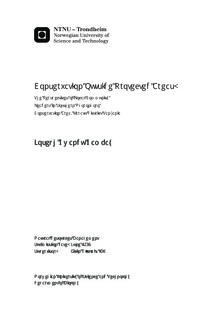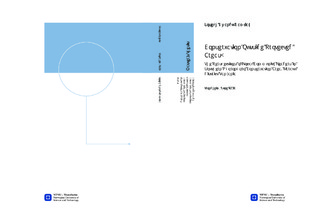| dc.contributor.advisor | Røskaft, Eivin | nb_NO |
| dc.contributor.author | Gambay, Joseph Gwandu | nb_NO |
| dc.date.accessioned | 2014-12-19T13:13:51Z | |
| dc.date.available | 2014-12-19T13:13:51Z | |
| dc.date.created | 2014-07-11 | nb_NO |
| dc.date.issued | 2014 | nb_NO |
| dc.identifier | 733875 | nb_NO |
| dc.identifier | ntnudaim:10175 | nb_NO |
| dc.identifier.uri | http://hdl.handle.net/11250/245527 | |
| dc.description.abstract | 20 villages were the case study areas in Karatu district located between two protected areas of Ngorongoro Conservation Area (NCA) and Lake Manyara National Park (LMNP). The district has potential areas that could be used to develop wildlife management areas (WMA) and adopt conservation agriculture (CA) partly to address the issues of land clearing and soil erosion causing siltation and disappearance of the surrounding wetlands. Using face to face interviews, structured questionnaires were administered to a total of 133 respondents of local leaders at the village government levels. For purpose of this study, a local leader was defined as any person who holds any official position in the village government. The choice of local leaders was based on the assumption that they represent broad perspective about biodiversity conservation in relation to the grassroots members of the local communities and other conservation actors. The study was conducted on the broad objective to evaluate the attitudes of local leaders towards the conservation of village areas. The findings indicated that the attitudes of local leaders towards the conservation of village areas were positive, with 87% of respondents describing charcoal making activities as detrimental and insignificant to the developments of their villages. Majority rated village environmental conservation bylaws and committees as ineffective in dealing with the current state of rapidly environmental deterioration in the village lands. Among other variables, the position of leader was important predictor. Those with higher positions were less positive towards conservation in village lands. The implication of the results could be linked to conservation initiatives outside protected areas and understanding the attitudes and securing the support of local leaders. The overarching goal is to enhance biodiversity conservation both outside and within protected areas. | nb_NO |
| dc.language | eng | nb_NO |
| dc.publisher | Institutt for biologi | nb_NO |
| dc.title | Conservation Outside Protected Areas:: The Perspectives of Local Community Leaders in Southern Ngorongoro Conservation Area, Karatu District Tanzania | nb_NO |
| dc.type | Master thesis | nb_NO |
| dc.source.pagenumber | 52 | nb_NO |
| dc.contributor.department | Norges teknisk-naturvitenskapelige universitet, Fakultet for naturvitenskap og teknologi, Institutt for biologi | nb_NO |

